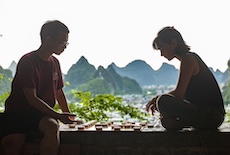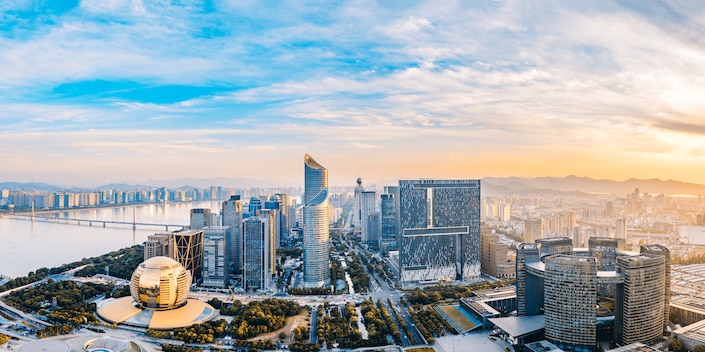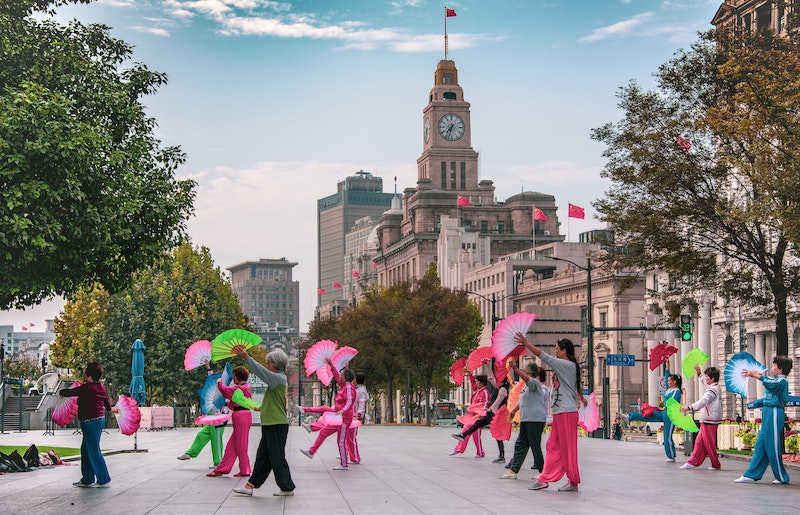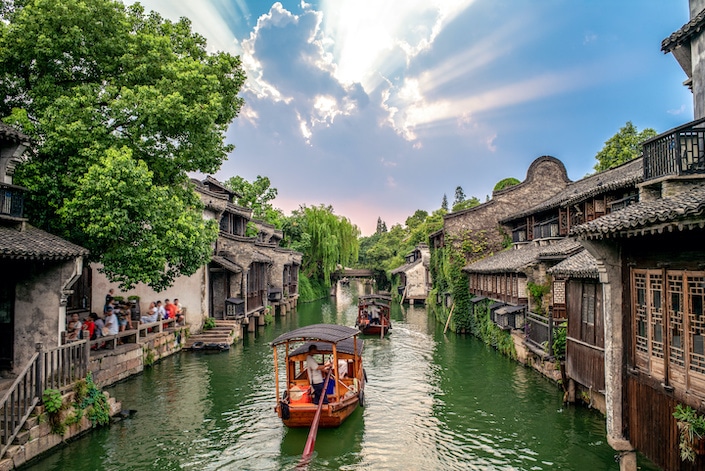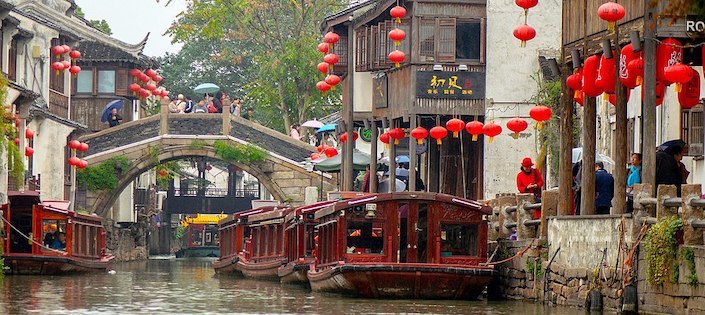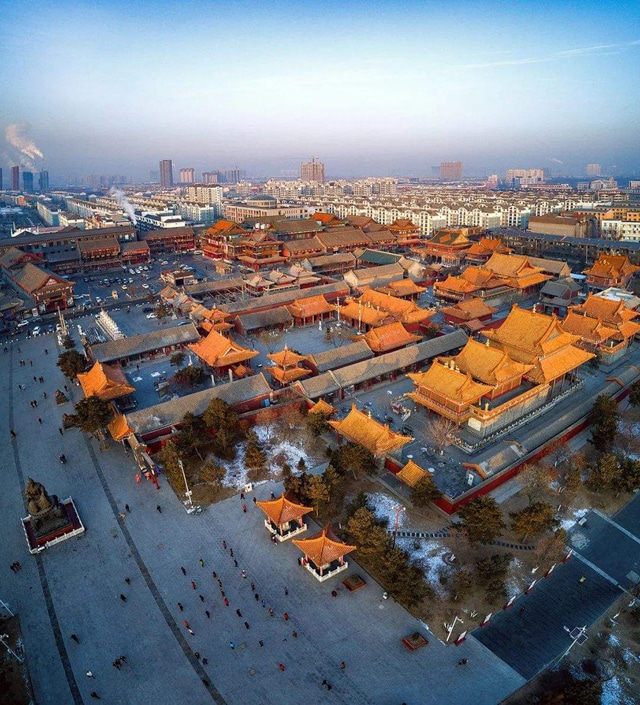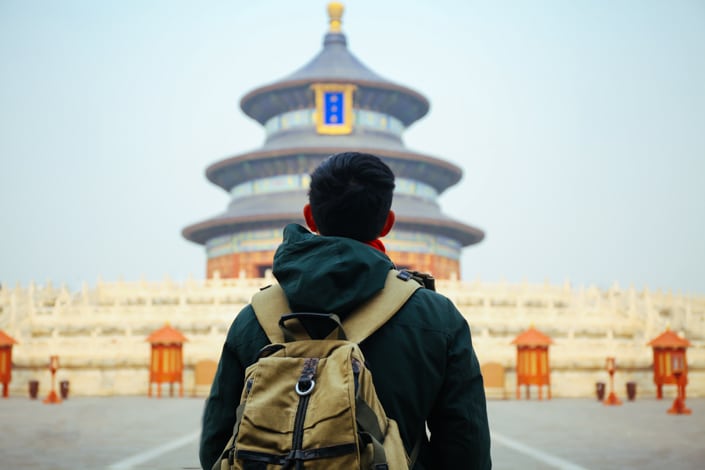Yellow Mountain Travel Guide: What to Know Before You Go
Learn Chinese in China or on Zoom and gain fluency in Chinese!
Join CLI and learn Chinese with your personal team of Mandarin teachers online or in person at the CLI Center in Guilin, China.
China's Yellow Mountain, also called Huangshan, is located in Anhui Province, about 500 km (300 mi) southwest of Shanghai. The name "Yellow Mountain" can be somewhat deceiving, since Huangshan is, in fact, a mountain range made up of several different peaks, some of which are higher than 1,000 m (3,250 ft). Consult this Yellow Mountain Travel Guide for help and key insights while planning your trip to Yellow Mountain!
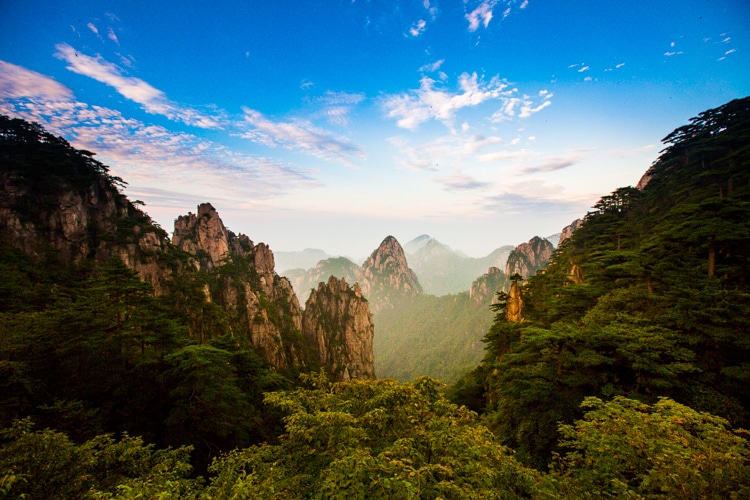
Table of Contents
The Mysterious Lure of Yellow Mountain
Yellow Mountain is a great place to watch the sunrise and sunset and is also a great place to hike. Today, as in the past, Huangshan is also considered a fantastic spot for poets, photographers, painters, and other artists to practice their craft.
Yellow Mountain's beauty has received a great deal of recognition over the years. In 1990, the mountain range was recognized by UNESCO as a World Heritage Site. In 2007, the Chinese National Tourism Administration named Huangshan as a National 5A Scenic Area. In 2009, the China World Records Association recognized the Guest-Greeting Pine of the mountain as the 'first pine of China.' Lastly, in 2018, the mountain range became a part of the World Biosphere Reserve Network.
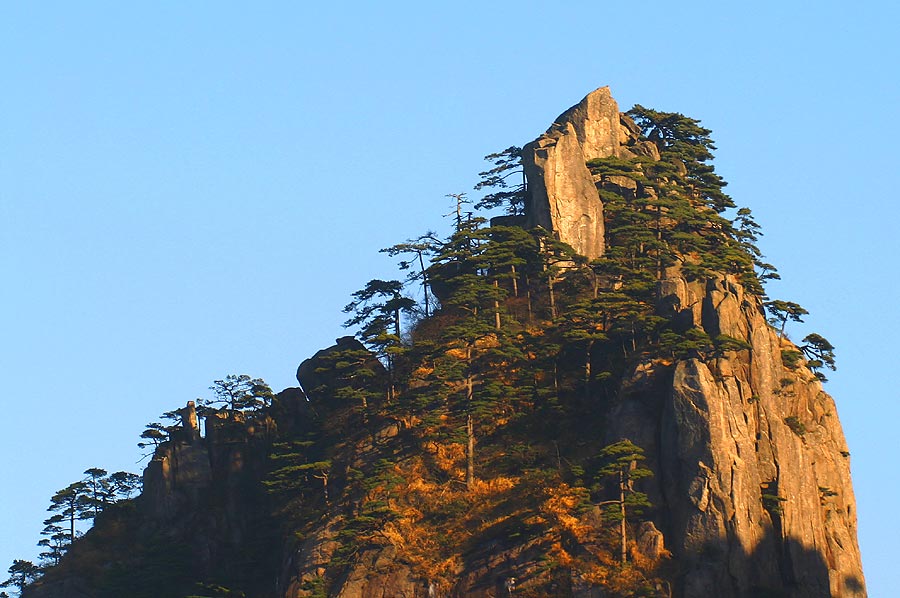
A Brief History of Yellow Mountain
Contrary to what some might think, the Yellow Mountain did not get its name because of its color. In fact, the mountain range, which was originally called Mount Yi or Yishan, was renamed in 747 AD. Its new name, "Huangshan," is thought to be in honor of the Yellow Emperor, known as Emperor Huang Di.
According to Chinese mythical stories, the Yellow Emperor once lived on the Yellow Mountain, where he worked on refining the medicines that eventually allowed him to become immortal. Over the years, many temples were built around the mountain, making it not just an attractive mountain range but also a sacred site.
What Makes the Yellow Mountain Famous?
Huangshan is a place of stunning natural beauty that is famous for these five wonders, among other things:
Guest-Greeting Pine
The Guest-Greeting Pine is renowned all over China. This 10-meter (33-feet) tree got its name because it looks like a man standing and stretching his hand to greet approaching guests. The tree is a popular spot for visitors wishing to take photographs of its unusual shape.
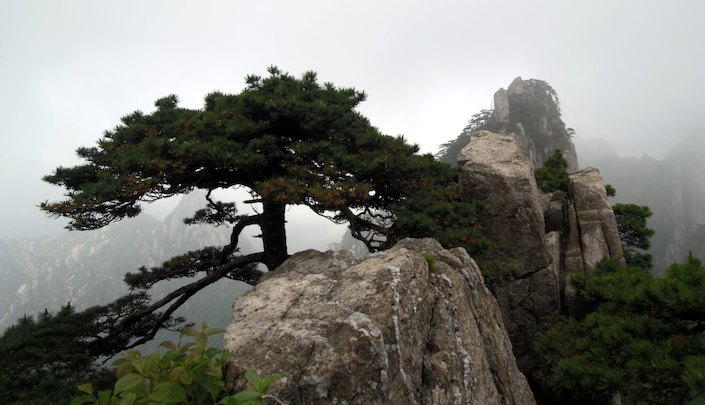
Strange Rock Peaks
The rock peaks on the Yellow Mountain are all shaped differently, and each has a different story to tell. Lotus Peak, which is the highest point in the mountain range, for example, looks like blossoming lotus. There is also Begin-to-Believe Peak, which embodies the true beauty of the Yellow Mountain. Other well-known peaks include Lion Peak, which looks like a crouching lion, and Bright Summit, which is a popular site for viewing the sunrise and sunset.
Hot Springs
Climbing Huangshan can be tiring. Those looking for a place to relax need look no further than the hot springs on the mountainside. Some believe that the Yellow Emperor used to bathe in these springs, an activity which helped him become younger. Today, the springs are often referred to as the 'Springs of Youth.'
Sea of Clouds
Sometimes the Yellow Mountain appears like an island in the sky that seems to be floating above a 'sea of cloud.' Mostly, this phenomenon occurs between November and May, especially after snow or rain. There are five cloud seas in the mountain range:
- North Sea - Best viewed from the Refreshing Terrace
- South Sea – Best viewed from the Jade Screen Pavilion.
- West Sea – Best viewed from the Cloud Dispelling Ridge.
- East Sea – Best viewed from the White Goose Ridge.
- Heavenly Sea – Best from the Bright Summit.
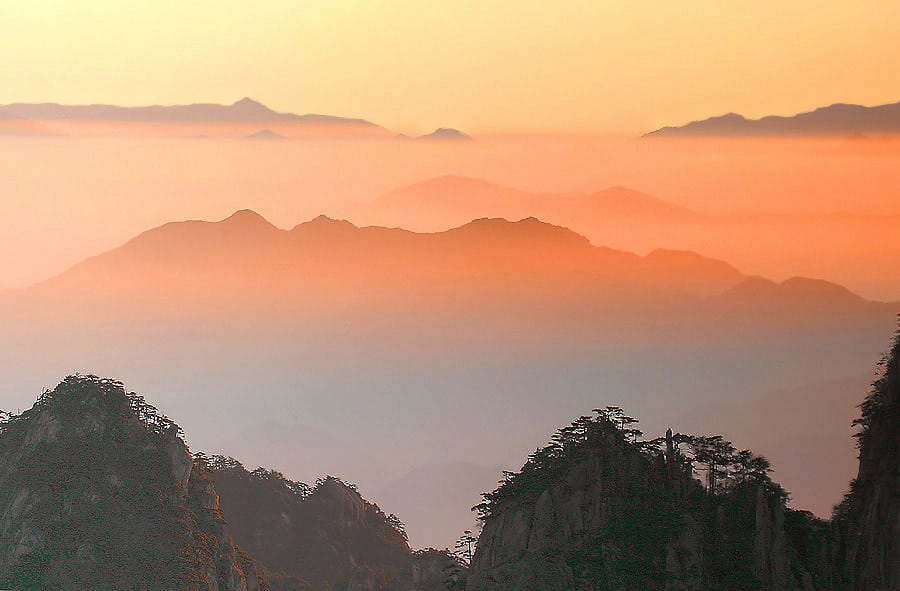
Winter Snow
Huangshan experiences winter between November and March, and this is an excellent time to see a new side of the mountain range. In winter, the rocks and trees are covered by ice, and the landscape appears to be covered in a huge white blanket. You can view the winter snow from Lotus Peak, Jade Screen Peak, Celestial Capital Peak, and Cloud Valley Temple.
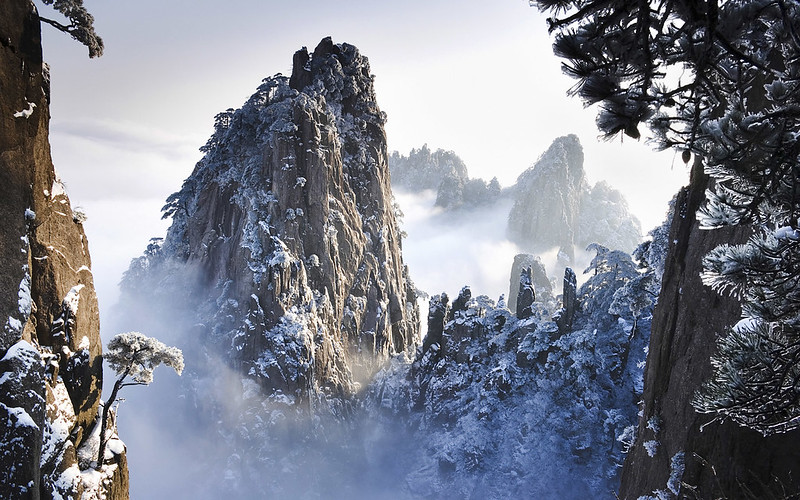
Top 8 Things to See at Yellow Mountain
There are many things to see in Huangshan. Here are the key highlights:
1. Buddha's Light
Only visible at certain times of the year, the Buddha's light is an incredible sight to behold. This optical phenomenon results from sunlight refracting off tiny water droplets to form several rings of rainbows. This rare wonder only occurs when conditions are ideal. To see the Buddha's light, you need to be standing on Aoyu Peak.
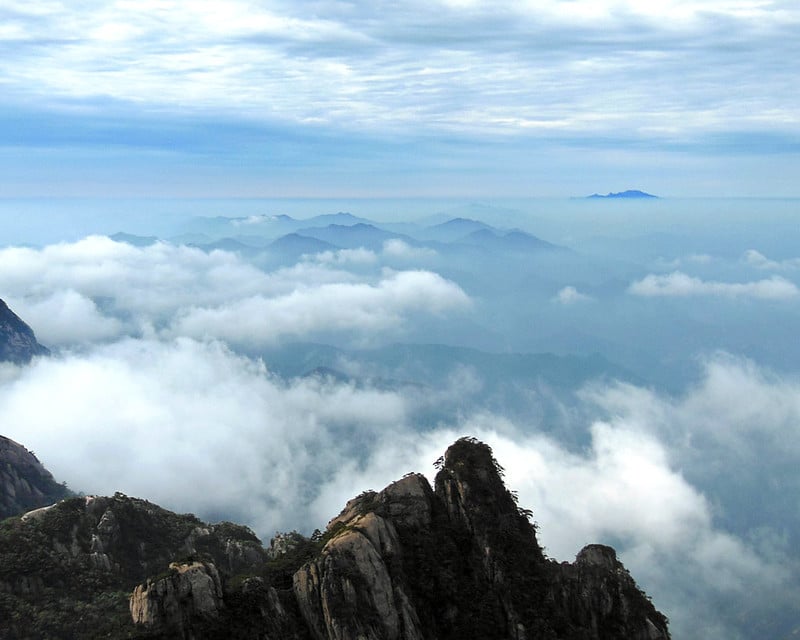
2. Sunrise and Sunset
Watching the sunrise or set on the Yellow Mountain is a fantastic experience. The mountaintops provide you with incredible viewpoints for this beautiful experience. You can do it from Lion Peak, Big Turtle Peak, or Bright Summit.
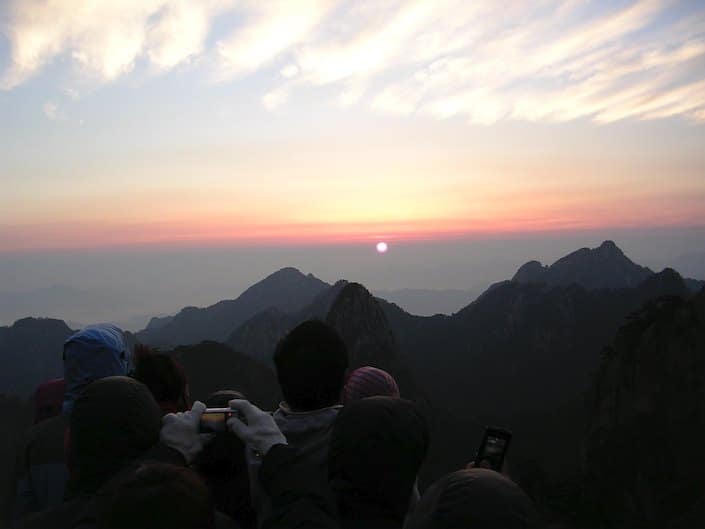
3. Beihai Scenic Area
The Beihai (“North Sea”) Scenic Area allows you to have a better interior view of the Yellow Mountain. Some key attractions in the scenic area include rocky peaks, cloud seas, pines, and a stone bridge. This viewpoint is also ideal for watching the sunset.
4. Baiyun Scenic Area
The Baiyun (“White Cloud”) Scenic Area is an open viewing point on the west side of the Yellow Mountain. The spot was quite popular during the Ming and Qing dynasties. It allows you to view clear streams, magnificent waterfalls, and tall pines. The experience at the scenic area is magical for both first-timers and return visitors.
5. Yungu Scenic Area
The Yungu (“Cloud Valley”) Scenic Area is a fantastic open valley located on the east side of the Yellow Mountain. At one time, a prime minister of the Song Dynasty used to spend time at a fountain in the scenic area, and this led to the fountain being named the Prime Minister Fountain. Popular must-see attractions in Yungu Scenic Area include the nine dragons' waterfall, rocky peaks, and ancient trees.
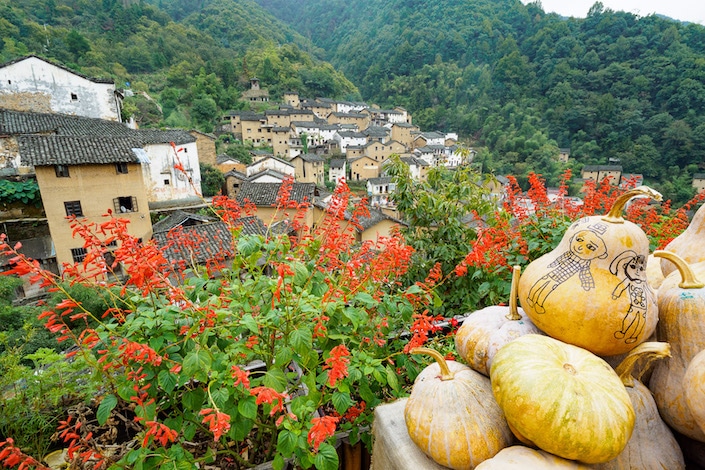
6. Yuping Scenic Area
Yuping (“Jade Screen”) is the front-viewing point for the Yellow Mountain. Around it are wonders like the Guest-Greeting Pine and rocky peaks. The viewpoint allows you to see Lotus Peak, Heavenly Capital Peak, and Big Turtle Peak up close.
7. Songgu Scenic Area
The Songgu (“Pine Valley”) Scenic Area is located on the northern part of the mountain. It allows you to view Camel Peak, Lion Peak, and Pagoda Peak. The area boasts fresh air and lovely flowers in the spring. Additionally, there are a variety of beautiful waterscapes in the area.
8. Hiking Routes
The Yellow Mountain is an exciting hiking area that provides plenty of opportunities to interact with Mother Nature. You can spend time exploring the Guest-Greeting Pine or the Begin-to-Believe Peak before heading to the top. Though there are many hiking routes you can follow to the top of the mountain, the most recommended are:
- Eastern route: This route begins from Yungu Temple and leads to Bright Summit
- Western route: This route begins from Mercy Light Pavilion and also leads to Bright Summit
In general, trekking to the top of the mountain can take 3 hours or more depending on your walking speed and the number of stops that you make along the way.
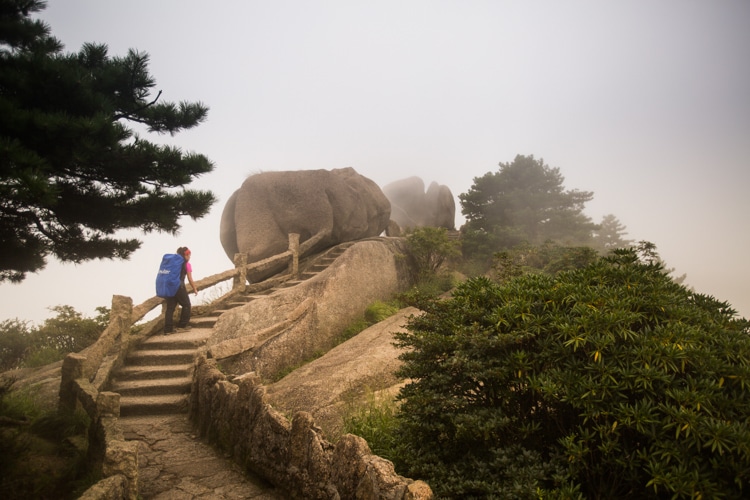
Getting There
Visitors coming to the Yellow Mountain have to first get to Huangshan City. The Huangshan Tunxi International Airport, which serves the city, enjoys direct flights from Beijing, Guilin, Shanghai, and other major Chinese cities. Alternatively, you can take a train ride or a bus from Shanghai or Nanjing. Once you get to the city, you can board a one-hour bus to the mountain, and then you can ascend it using cable cars or buses.
Best Time to Travel and What to Wear
It is possible to travel to Huangshan during any of the different seasons. It depends on what you are planning to do and see there. There are specific months that are considered ideal for different types of visit, as shown below:
- Winter (December to February) – This is the best time for snow viewing. Temperature averages -2-70C (28-460F) and so you should dress warmly. You should pack a thick jacket and waterproof boots or sneakers.
- Spring (March to May) – This is the best time to hear birds sing and to see flowers blossom. Temperatures average 100C (500F), so you should wear a sweater or coat on top of your regular clothing.
- Summer (June to August) – This is the best time to see pines and cloud seas. Temperatures average 23-330C (73-910F), so you should wear light clothing. It may be necessary to bring a sweater, however.
- Autumn (September to November) – This is the best time to see gray rocks and green pines. Temperatures average 8-120C (46-540F), so bringing a sweater or a coat is a good idea.
Closing Thoughts
The Yellow Mountain is a spot of genuine beauty. Visiting this mountain range allows you to enjoy some of China's best hiking along with fantastic views of the sunrise and sunset. Next time you have a free weekend on your hands, consider making the trip to Anhui Province to see the Yellow Mountain's impressive scenery for yourself.


